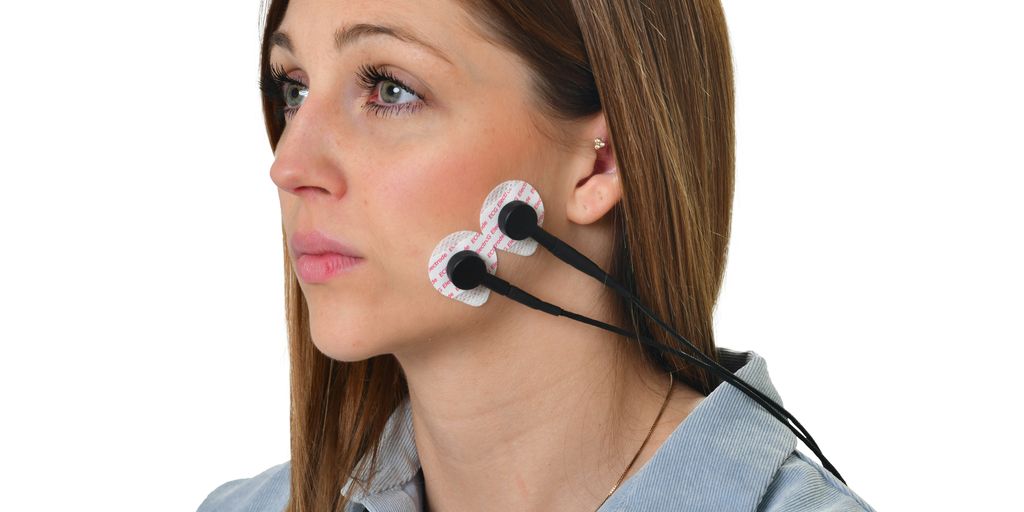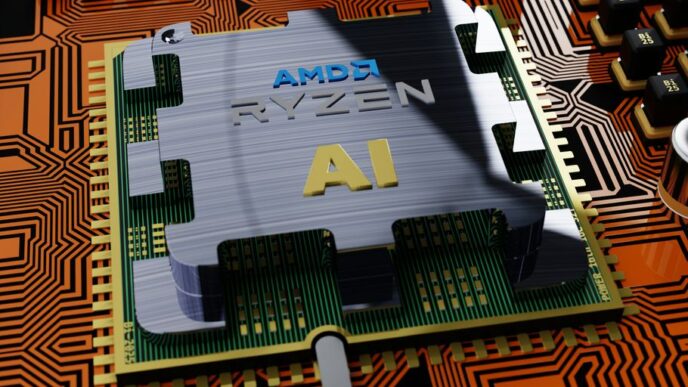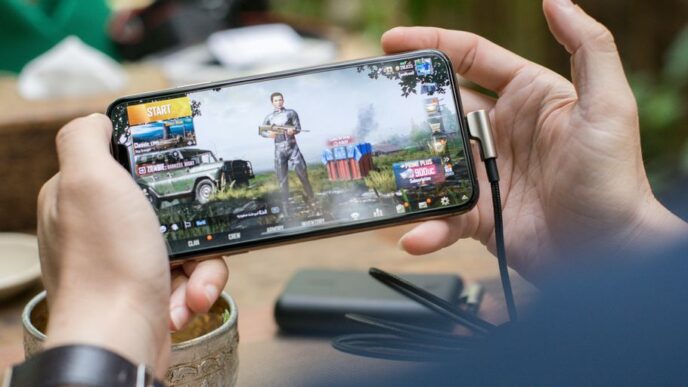So, you’re thinking about jumping into virtual reality, and you’re wondering, “how much is an Oculus Quest 2?” especially looking ahead to 2025. It’s a good question because even with newer headsets out there, the Quest 2 might still be a smart pick. We’ll break down what makes it tick, what it might cost you, and if it’s still a good buy for your hard-earned money.
Key Takeaways
- Even in 2025, the Oculus Quest 2 is still a good option for many people.
- The price of a Quest 2 can change a lot depending on if it’s new or used.
- The Quest 2 holds its own against newer VR headsets for basic use.
- You can have a lot of fun with the Quest 2, playing games and doing other things.
- Understanding Meta’s system is helpful for getting the most out of your Quest 2.
Understanding the Oculus Quest 2 in 2025
The Evolution of the Oculus Quest 2
Okay, so it’s 2025. The Oculus Quest 2, now more commonly known as the Meta Quest 2, has been around for a while. It launched back in 2020, and in tech years, that’s practically ancient history! But, it’s important to remember just how much of a game-changer it was. The Quest 2 brought standalone VR to the masses with its accessible price point and ease of use. It didn’t need a PC or phone to run, which was huge. Now, we’ve seen newer headsets come out, but the Quest 2 still holds a place in VR history. It really helped push VR into the mainstream.
Key Specifications and Performance
Even in 2025, the Quest 2’s specs are still respectable. It boasts a resolution of 1832 x 1920 per eye and a refresh rate of up to 120 Hz. While newer headsets might have higher resolutions and faster processors, the Quest 2 can still deliver a solid VR experience. The Meta Quest 2 was developed by Facebook (Meta) and released in 2020. Here’s a quick rundown:
- Processor: Qualcomm Snapdragon XR2 Platform
- RAM: 6GB
- Storage: Options for 128GB or 256GB (depending on the model)
- Display: LCD panel
It’s worth noting that the performance you get will depend on the game or application you’re running. Some of the more demanding titles might require lower graphics settings to maintain a smooth frame rate. But overall, it’s still a capable piece of hardware.
Why the Oculus Quest 2 Remains Relevant
So, why even consider a Quest 2 in 2025? Well, a few reasons. First, the price. With newer headsets on the market, used Quest 2s are much cheaper. If you can find a Quest 2 headset for less than $100: Buy it. Second, the library of games and experiences is massive. Since it’s been out for a while, there are tons of games available, many of which are quite affordable. Third, it’s still a great entry point into VR. If you’re curious about VR but don’t want to spend a fortune, the Quest 2 is a solid option. Plus, it’s standalone, so you can take it anywhere. It’s a simple and easy way to step into virtual reality without breaking the bank.
Current Market Value of the Oculus Quest 2
New Versus Used Pricing
Okay, so you’re wondering what an Oculus Quest 2 will set you back in 2025. Well, since it’s an older model, you probably won’t find it brand new in most stores anymore. Your best bet is looking at the used market. Expect to see prices ranging from $80 to $150, depending on condition and storage size. Keep an eye on online marketplaces and local classifieds for the best deals. You might even find someone just trying to get rid of one!
Factors Influencing Price Fluctuations
Several things can affect the price of a used Quest 2. Here’s a quick rundown:
- Storage Size: The 256GB model will usually cost a bit more than the 128GB version. More space equals more value, even used.
- Condition: Scratches, dents, or controller issues will knock the price down. A pristine headset will fetch a higher price.
- Included Accessories: Original packaging, controllers in good shape, and extra accessories like a carrying case can increase the value. Check out the Meta Quest VR headsets to compare prices.
- Market Demand: If there’s a sudden interest in retro VR or a popular game gets released that runs well on the Quest 2, prices might temporarily go up.
Identifying a Good Deal
So, how do you know if you’re getting a good deal? Here’s what I’d do:
- Compare Prices: Check multiple online marketplaces to see the average selling price for similar Quest 2 models.
- Inspect Carefully: If possible, meet in person to inspect the headset before buying. Look for any signs of damage or wear.
- Test Functionality: Make sure both controllers work, the headset powers on, and the display is clear. If you can, try it out with a game or two.
- Factor in Extras: Consider any included accessories when evaluating the price. A headset with extra games or a carrying case might be worth a bit more.
Basically, if you can snag a working Quest 2 for under $100, that’s a pretty solid deal in 2025. Happy hunting!
Assessing the Hardware’s Longevity
Let’s be real, tech moves fast. Thinking about the Oculus Quest 2 in 2025 means we gotta consider how well it’s holding up. Is it still a viable option, or is it just gathering dust in the corner?
Comparing Quest 2 to Newer Headsets
Okay, so the Quest 2 isn’t the newest kid on the block anymore. We’ve seen newer headsets come out with better resolution, faster processors, and fancier features. But that doesn’t automatically make the Quest 2 obsolete. It’s more about whether the improvements in newer headsets justify the extra cost for you. Think about it: do you really need the absolute bleeding edge, or will the Quest 2 still give you a great experience? Here’s a quick comparison:
| Feature | Oculus Quest 2 | Hypothetical Quest 4 (2025) |
|---|---|---|
| Resolution | 1832 x 1920 per eye | 2500 x 2500 per eye |
| Processor | Qualcomm Snapdragon XR2 | Qualcomm Snapdragon XR4 |
| Refresh Rate | 120Hz | 144Hz |
| Price (New) | $299 (original) | $599 |
Software Updates and Compatibility
This is a big one. Meta (Facebook) still supports the Quest 2 with software updates, which is awesome. But how long will that last? That’s the million-dollar question. As long as they keep pushing out updates and ensuring compatibility with new games and experiences, the Quest 2 will stay relevant. If they drop support, well, that’s a different story. It’s worth keeping an eye on Meta’s announcements to see what their plans are. The software platform is key to the longevity of any VR headset.
The Value of an All-in-One Device
One of the coolest things about the Quest 2 is that it’s completely standalone. No wires, no PC needed (unless you want to use it with PC VR). That makes it super convenient and easy to use. You can just pick it up and jump into VR wherever you are. Newer headsets might have better specs, but the Quest 2’s simplicity and portability are still a big plus. Plus, the price point makes it a great entry point into VR. Consider these points:
- Ease of use: No complicated setup required.
- Portability: Take it anywhere.
- Affordability: Still a budget-friendly option.
Ultimately, the longevity of the Quest 2 depends on a mix of factors. It’s not the newest or most powerful headset, but it’s still a capable and convenient option, especially if you’re on a budget. Just keep an eye on software support and consider whether the improvements in newer headsets are worth the extra cost for your needs. You can also find great deals on hard drives to expand your storage for games and apps.
The Immersive Experience of the Oculus Quest 2
Stepping into Virtual Worlds
Okay, so you’re thinking about getting a Quest 2 in 2025. Let’s talk about what it feels like. It’s not just about specs; it’s about the experience. The Quest 2 really does transport you; it’s more than just a screen strapped to your face. I remember the first time I tried it; I was genuinely surprised. It’s easy to forget you’re still in your living room. The immersion is pretty good, even compared to newer headsets. It’s a whole different thing than just playing a game on a console or PC.
Gaming and Entertainment Capabilities
Gaming is a big part of the Quest 2 experience, obviously. But it’s not just gaming. Think about watching movies on a massive virtual screen, attending virtual concerts, or even doing fitness classes in VR. The possibilities are pretty broad. The Meta Quest 2 has a decent library of games, and there’s always something new to check out. Here’s a quick look at some popular categories:
- Action/Adventure
- Puzzle Games
- Social/Multiplayer Experiences
- Fitness Apps
Beyond the Living Room
One of the coolest things about the Quest 2 is that it’s portable. You’re not stuck tethered to a PC or console. You can take it to a friend’s house, use it in your backyard (carefully, of course!), or even bring it on vacation. The all-in-one design makes it super convenient. I’ve even used mine on long flights (with pre-downloaded content, naturally). Just be mindful of your surroundings and maybe don’t flail your arms around too much in public!
Making an Informed Purchase Decision
When to Consider a Quest 2
Okay, so you’re thinking about getting a Quest 2 in 2025. Is it still a good idea? Well, it depends. If you’re new to VR and don’t want to drop a ton of cash, the Quest 2 is still a solid entry point. It’s also great if you want something portable and easy to use without needing a powerful PC. But, if you’re a VR enthusiast looking for the latest and greatest, or if you’re bothered by older tech, there might be better options out there.
Consider these points:
- Budget: Are you okay with spending more for newer features?
- Experience: Is this your first VR headset, or are you upgrading?
- Use Case: Will you be using it for casual gaming, or more intensive VR experiences?
Alternatives to the Oculus Quest 2
Let’s be real, the Quest 2 isn’t the only game in town anymore. There are other headsets to consider, each with its own pros and cons. The newer Meta Quest 3 is an obvious upgrade, offering better performance and mixed reality capabilities, but it comes at a higher price. There are also PC-tethered headsets like the Valve Index, which offer top-of-the-line VR experiences if you have a gaming PC. And don’t forget about headsets from other companies like HTC and Pico, which are also competing in the VR space. If you are looking for a virtual reality experience in Los Angeles, you might want to consider these alternatives.
Here’s a quick comparison:
| Headset | Pros | Cons |
|---|---|---|
| Meta Quest 3 | Better performance, mixed reality, newer tech | More expensive |
| Valve Index | High-fidelity VR, excellent tracking | Requires a powerful PC, tethered |
| HTC Vive Series | High-end options, modular | Can be very expensive, requires external base stations for some models |
| Pico 4 | Good value, decent performance | Less established ecosystem |
Maximizing Your Investment
So, you’ve decided to go for the Quest 2. How do you make sure you get the most out of it? First, take care of the hardware. Keep it clean, store it properly, and don’t let it get too hot. Second, explore the content library. There are tons of games and experiences available, both free and paid. Third, consider getting some accessories, like a better head strap or a carrying case. And finally, don’t be afraid to experiment and try new things. VR is all about exploration, so have fun with it!
Here are some tips to maximize your investment:
- Protect your headset: Invest in a case and screen protector.
- Explore the Meta store: Find games and experiences that suit your interests.
- Join the community: Get tips and recommendations from other Quest 2 users.
Navigating the Oculus Ecosystem
Understanding Meta’s Role
Okay, so the Oculus Quest 2 is a cool piece of tech, but it’s also part of a bigger picture controlled by Meta. Meta owns Oculus, and that means they have a big say in the hardware, software, and the whole VR experience. They’re the ones pushing updates, deciding which features to add (or remove!), and shaping the future of VR for Quest users. It’s kind of like how Apple controls the iPhone ecosystem – you’re playing in their sandbox, which has pros and cons. They’ve been investing heavily in VR, but sometimes their decisions can be a bit controversial, like requiring a Facebook account to use the headset (which, thankfully, is no longer the case!).
Content Library and Game Availability
One of the best things about the Quest 2 is the huge library of games and experiences available. You’ve got everything from action-packed shooters to relaxing puzzle games, and new stuff is always being added. The Quest 2 offers a strong selection of titles, including some really cool exclusives you can’t find anywhere else. Plus, there are apps for fitness, social stuff, and even productivity. The quality can vary, of course, but there’s definitely something for everyone. Here’s a quick look at some popular categories:
- Gaming: Shooters, RPGs, puzzle games, rhythm games (like Beat Saber)
- Fitness: VR workouts, boxing games, dance apps
- Social: Virtual hangouts, multiplayer games, collaborative experiences
- Entertainment: VR movies, concerts, documentaries
Community and Support
VR can be a bit confusing at first, but luckily, there’s a pretty active community of Quest 2 users out there. You can find forums, Reddit groups, and Discord servers where people share tips, troubleshoot problems, and recommend games. Meta also has its own support channels, but sometimes getting help from other users is faster and more effective. Don’t be afraid to ask questions – most VR enthusiasts are happy to help newcomers get started. Plus, there are tons of YouTube tutorials and guides that can walk you through everything from setting up your headset to modding games. It’s a great way to learn and get the most out of your Meta platform experience.
Conclusion
So, what’s the final word on the Quest 2 in 2025? It’s still a pretty good piece of tech, especially if you can snag one for a super low price. Think of it like finding a classic car that still runs great – it might not have all the fancy new features, but it gets the job done and is a blast to drive. If you’re just dipping your toes into VR, or you’re on a tight budget, a cheap Quest 2 is a solid choice. But if you’re looking for the latest and greatest, or you can’t find a Quest 2 for a steal, then it’s probably better to save up for a newer model. At the end of the day, it’s all about what you want to get out of your VR experience and how much you’re willing to spend.
Frequently Asked Questions
Who made the Meta Quest 2 and when was it released?
The Meta Quest 2 was first released in 2020 by Facebook, which later changed its name to Meta. It was initially called the ‘Oculus Quest 2’ but was later rebranded. Both names refer to the same virtual reality headset.
What kind of device is the Meta Quest 2?
The Meta Quest 2 is a standalone virtual reality headset. This means it doesn’t need to be hooked up to a powerful computer or game console to work. It has everything it needs built right in to give you a full VR experience.
Is the Meta Quest 2 still worth buying in 2025?
In 2025, if you can find a Quest 2 (with 128GB or more storage) for under $100, it’s generally a good deal. It can still play most VR games and experiences, and Meta continues to provide software updates for it. However, if it costs more than $100, you might be better off looking at newer models like the Quest 3S or Quest 3.
What are the main display features of the Meta Quest 2?
The Meta Quest 2 offers a clear picture with a resolution of 1832 x 1920 pixels for each eye. It also has a refresh rate of up to 120 Hz, which means the images on screen update very quickly, making movements look smooth and natural.
How does the Quest 2’s hardware compare to other VR systems?
Compared to older VR systems that needed strong computers, the Quest 2 is an all-in-one device. While it might not have the absolute best graphics compared to brand-new, more expensive headsets, it offers a fantastic VR experience for its price, especially if you find a good deal.
What’s it like to use the Meta Quest 2 for virtual reality?
When you put on a Quest 2, you’re transported to a different world. It feels very real, and the games and experiences are incredibly fun. Many people find it to be a very immersive and exciting way to experience digital content, whether it’s for gaming, watching videos, or exploring virtual spaces.












